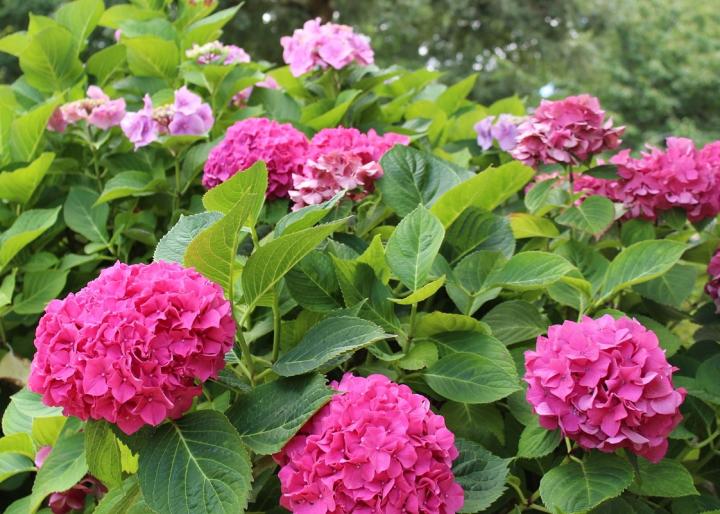

Hydrangeas love the warm morning sun, but they dislike the heat of the afternoon. The best place to plant hydrangeas is in a sheltered location with sunny mornings and shady afternoons. You often find this on the north or south side of your home. Avoid planting directly underneath trees, which can lead to competition for water and nutrients. High winds can rip and damage leaves and destroy the flowers.
Hydrangeas grow well in soil containing an abundance of organic material. Good drainage is vital. While hydrangeas like moist soil, they cannot tolerate being waterlogged. Soggy, poor draining soils can cause root rot. In just a few weeks, your hydrangeas can quickly die. If you have heavy soil, consider mixing in plenty of compost prior to planting to improve soil quality.
Where to plant hydrangeas:
Keep reading for some suggestions on how to find the right spot for planting your hydrangea.
- In general, the best location for a hydrangea is a spot in your garden that receives morning sun and afternoon shade. If you live further north, hydrangeas will tolerate more sun (possibly even full sun all day).
- Make sure to account for the mature size of the hydrangea when selecting a spot for planting—give your plant plenty of room to grow.
- Pick an area of your garden that has excellent drainage. Amend the soil with compost if necessary.
- Do not plant hydrangeas beneath a tree—the root competition and lack of sunlight will prevent them from thriving.
- Avoid planting hydrangeas in exposed areas where gusty winds could snap stems.
Propagation
One hydrangea can turn into many through simple propagation techniques. Bigleaf and panicle hydrangeas are best propagated through layering in early to mid-summer. All you have to do is:
- Dig a small trench near your hydrangea plant.
- Bend a branch down to the trench so it touches the soil in the middle of the branch (six to 12 inches of branch should extend past the trench).
- Make scratches in the bark where the branch touches the trench soil.
- Fill in the trench and place a paver, brick or stone on top.
- With time, the branch will form its own root system and may be transplanted to a new location.